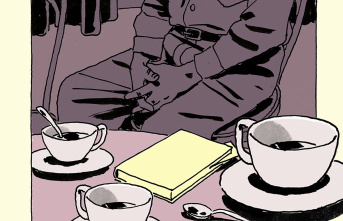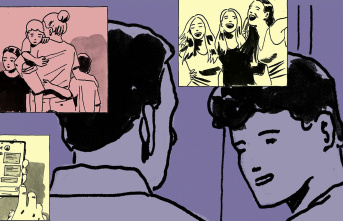The tissue under the fingernails or toenails is called the nail bed. If this becomes inflamed, there is talk of nail bed inflammation. Germs such as bacteria or fungi can trigger the unpleasant skin reaction by penetrating the skin through small wounds. Frequently, nail bed inflammation not only affects the nail bed, but also the surrounding nail area with nail fold, nail wall and cuticles. Find out here how to recognize nail bed inflammation and treat it properly.
Injuries to the cuticles are usually caused by improper nail care, dry, cracked hands or feet and cuts. But frequent contact with water or aggressive chemicals can also trigger painful inflammation of the nail bed. Sometimes the smallest punctures, such as a splinter, are enough to pave the way for germs. Ingrown nails, nail biting or bruising also damage the fine skin around the nails. Nail bed infections on the feet are often due to pressure points on the toes. You should therefore avoid wearing shoes that are too tight. Typical pathogens causing inflammation include bacteria such as staphylococci and streptococci, as well as yeast and herpes viruses.
When the nail bed is acutely inflamed, the diseased tissue reddens, swells, and causes pain. The affected areas of skin also feel hot and are characterized by a throbbing pain, which is triggered by the pulsation of the small blood vessels. If it is an infection with bacteria, pus even forms on the side edges and under the nail plate. This can react to pressure and may leak out from the side of the inflamed area. Possible side effects can also be fever and swollen lymph nodes.
You can get various remedies in the pharmacy or online. Disinfectant solutions or ointments containing iodine or other antibacterial substances can help quickly, especially if bacteria are the cause of the infection.
Pulling ointments are very suitable for treating inflamed fingernails or toenails. Such ointments draw the inflammation to the surface of the skin so that the abscess matures faster. At first glance, this sounds paradoxical, but this way the skin becomes softer, the painful pressure decreases and the pus can drain naturally. The "ilon classic" traction ointment helps against skin inflammation through to small abscesses and is said to be particularly gentle on the skin thanks to the plant-based active ingredients.
The "Betaisodona" traction ointment contains the active ingredient iodine, which is suitable for reducing germs, disinfecting and supporting the healing of nail bed inflammation. Iodine is also effective against a variety of pathogens such as bacteria, viruses, and fungi.
Tip: You can easily save money with a voucher from Shop Apotheke.
Incipient nail bed inflammation can be reduced by soothing foot baths. Anti-inflammatory herbal supplements such as chamomile can soothe the skin and help reduce inflammation. Soak the affected finger or toe in a chamomile bath twice a day for about 20 minutes.
Simple measures such as baths, disinfecting solutions and ointments often help when inflammation starts. If you have nail bed inflammation for the first time, you can also seek advice from the pharmacy.
If the inflammation does not go away after the first treatment, the redness spreads, swelling or overheating occurs, the pain increases or if there are weeping or purulent areas, then you should consult a doctor. The first point of contact can be your family doctor, who will discuss further steps with you.
Longer-lasting nail bed inflammation that is not treated or not sufficiently treated can lead to the nail becoming deformed or falling off. In the worst case, the surrounding tissue, tendons and tendon sheaths and finally the bones could be affected and painful bone inflammation would develop. Do not try to open a focus of pus yourself, otherwise bacteria could be carried into deeper tissue layers.
Unpleasant nail bed infections can be prevented if you pay attention to the following things when caring for your nails.
Note: This article contains general information and cannot replace a visit to a doctor.
This article contains so-called affiliate links. Further information are available here.











